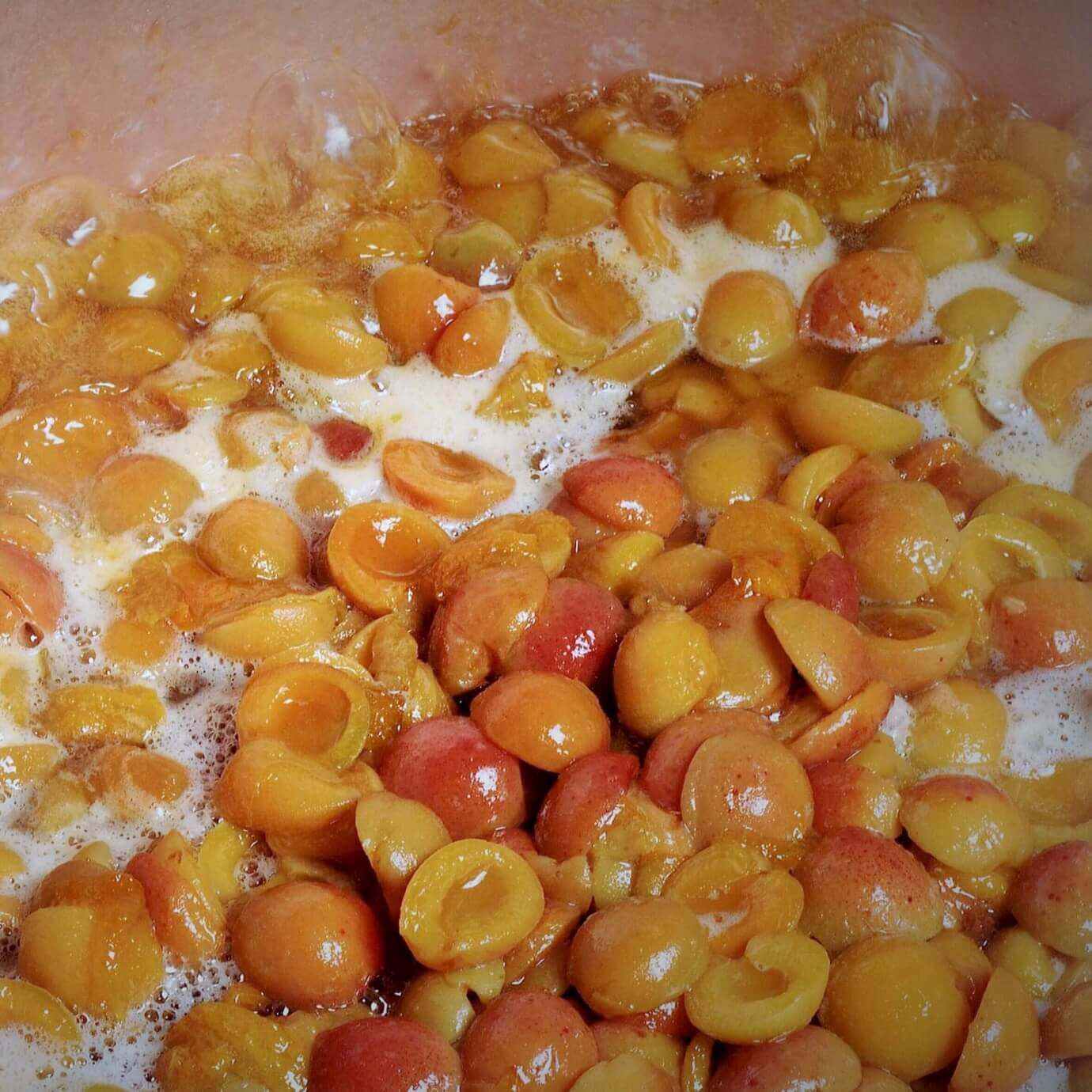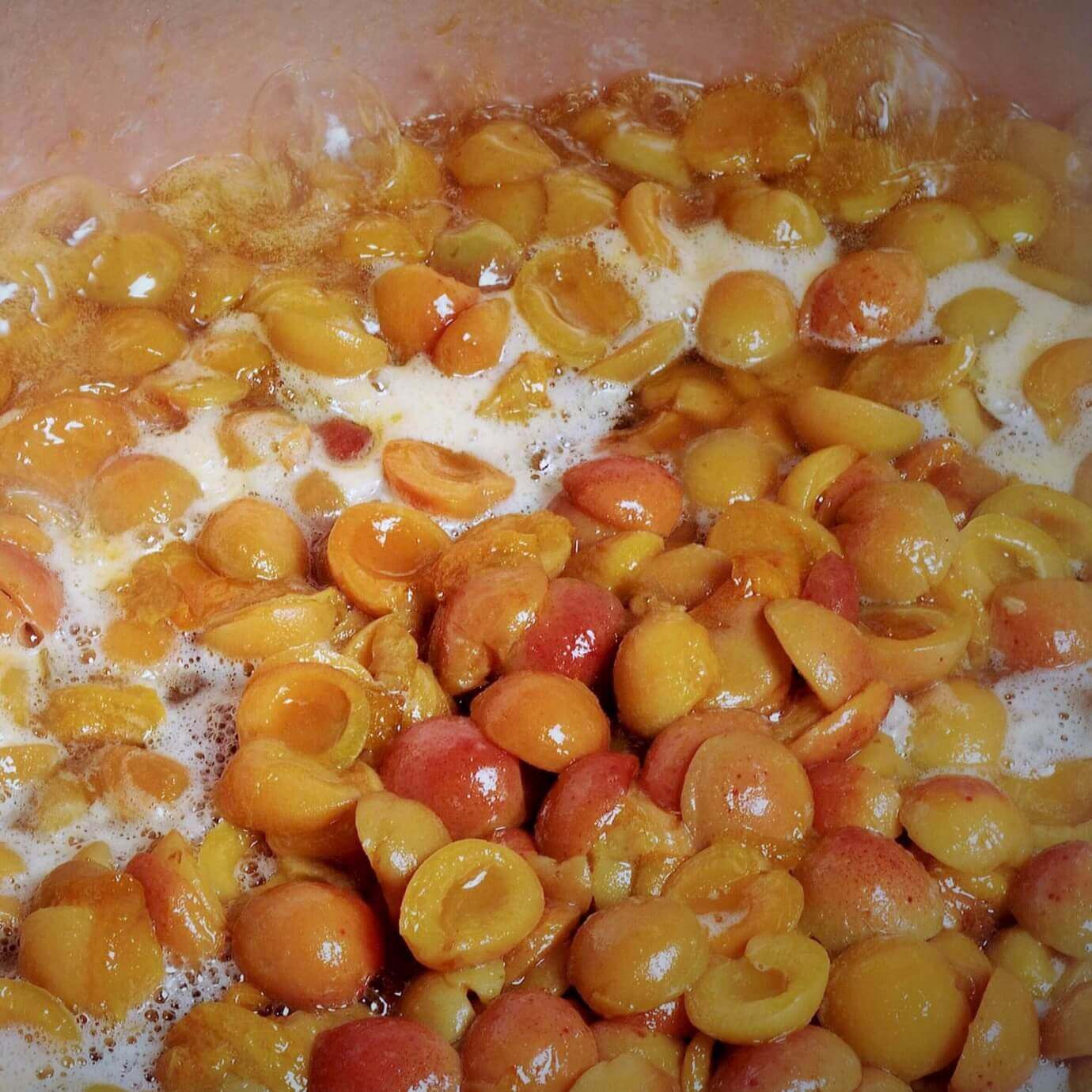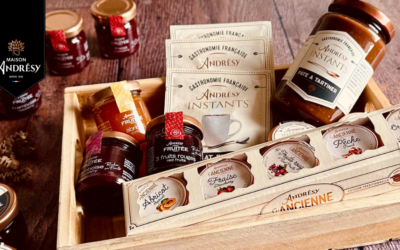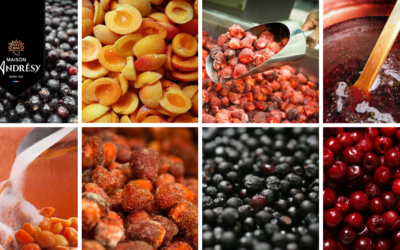Andrésy’s tips for successful jam recipes
03
October 2018
Andrésy has been making high-end jams for 4* and 5* hotels and delicatessens since 1952. One of today’s leaders in the upmarket hotel sector and a veritable global reference when it comes to French gastronomy, the jam maker draws on its considerable expertise to offer you various tips. Discover the secrets behind successful homemade jam recipes.
Good ingredients for good jam recipes
Fruit choice is a crucial factor when it comes to making delicious jam recipes. Andrésy recommends using fruit that is quite ripe – but not overly so – and flavoursome, just as you would choose if you were to eat it raw. How your jam tastes will depend greatly on the quality of the fruit used.
Andrésy’s jam recipes
Julia Cassan, product quality and R&D manager, explains how to make tasty jams every time, using apricots as an example.
You will need 1kg of fruit, cut however you wish.
- Simmer over a gentle heat until soft.
- When the fruit releases water, add 3 tablespoons of sugar to start the crystallizing process.
- Add an acidifying agent such as lemon juice.
- Sprinkle in 3 tablespoons of sugar mixed with pectin, a natural setting agent present in plants, to obtain the best possible consistency for your jam. Julia Cassan describes the spoon test trick: when your stop stirring, you can examine the consistency of the product in the spoon. Does it drip off the spoon or is it concentrated and more solid? You can then adjust the ingredients as required.
- After stirring for 5 minutes, add 1kg of sugar. Today, there is an increasing trend towards reducing the quantity of sugar to between 600 and 700 g out of a concern for health and well-being.
Regulations do not govern what you do at home so you are free to adjust the amount of sugar to suit your own tastes.
- Once all the ingredients have been added, they must be stirred gently for 5 minutes to avoid damaging the fruit and make sure some tasty chunks remain.
Julia Cassan then explains that the product needs to be brought to the boil for 3 minutes. Your jam is ready!
«A combination of fruit and sugar that cooks by osmosis»
Another tip: hot jam is liquid; it’s quite normal and there is no need to overcook it. It will set naturally as it cools. That’s why housewives in the past dripped freshly cooked jam onto a cold plate from the fridge: they could see whether the preparation thickened on contact with the cold surface, and if they could stop the cooking.
So that your jams can be kept for up to two years, you need to then carry out the self-pasteurization step. First of all, this involves filling the jar right to the top to prevent mould from forming. Once the lid is on, turn the jar upside down and allow it to cool in a bowl of lukewarm water and then for a further ten or so minutes in cold water.
Andrésy’s tips
The artisan company has some additional advice to help you further enhance you jam recipes.
You can use other acidifying agents, such as passion fruit juice or the juice of a Yuzu, an Asian citrus fruit. Simply add during cooking. Basil and fresh mint can also add an extra something to your jam recipes. If you like herbs and spices, let your creativity run wild and treat yourself!
The jam specialist also recommends combining different fruits because they enhance one another. Strawberry jam will be even more flavoursome when combined with pear, apple or another red fruit, such as cherries or raspberries. Using a smaller quantity of another fruit also influences consistency.
If you can, do as Andrésy Confitures does and cook you fruit in copper pans. Copper is a good conductor of heat, which allows better gelling, unlike aluminium and stainless steel, which can burn your jam recipes.
Your homemade jam recipes
Andrésy Confitures, the upmarket hotel sector leader, places product quality at the top of its list of priorities. The company has to comply with regulations governing “jams”: a product can only be called a jam when it contains a minimum of 55 grams of sugar and 35 or 45 grams of fruit. In contrast, when you make it yourself you can adjust your jam recipes to suit your own taste.
There is an enormous variety of fruit and you can make different jams throughout the year. And irrespective of the fruits you choose, thanks to Andrésy’s precious tips and advice, you will finish up with a delicious jam every time.
Coliseurs, what new features can you add to your gourmet gourmet baskets to keep them attractive?
Accueil 23April 2024Parcels are highly appreciated by companies to honor their customers, by works councils for employees, and more generally by all those who receive them.Of all the different types of parcel, gourmet food baskets are an ever-popular category, and...
New: Andrésy Bio is now available! New recipes, new design… Why choose an organic jam for your establishment?
Accueil 16April 2024Did you know that Maison Andrésy was one of the first jam makers to market an organic jam? Long before stores and consumers became aware of the benefits of organic produce, Maison Andrésy created a tailor-made jam for Monoprix stores. This...
Wondering which fruits are best for making jam ? Maison Andrésy, your expert in fruit sourcing, gives you its selection criteria!
Accueil 6April 2024 In 2021, the Cassan family, who have run Maison Andrésy for 3 generations, decided that the motto of the family jam factory would be: "Sourcing the best of Nature to offer you the excellence of our know-how". For us, this means we're committed...





